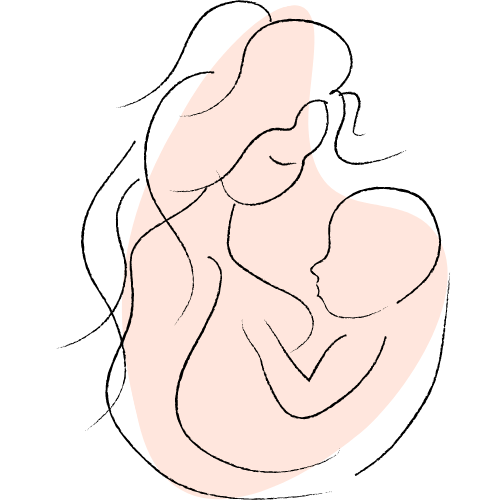Sleeping positions during pregnancy
The changes that happen to the body during pregnancy may require you to make a change to your sleeping position. The new (larger) shape of your body, back/neck pain, insomnia, shortness of breath, and even heartburn can also affect the way you feel in your normal or favorite sleeping position.
Unfortunately, your normal sleeping position may no longer be an option for you during pregnancy. It may take time to adjust to the new and most recommended sleeping positions.
The best sleeping position during pregnancy is SOS (sleep on side), according to the American Pregnancy Association. Taking that one step further, the American Pregnancy Association recommends sleeping on the left side, with legs and knees bent with a pillow between the legs. This position helps increase the amount of blood that reaches the baby (through the placenta).
Side sleeping
Side sleeping is the highest recommended position for pregnancy, and sleeping on the left side specifically.
Pros:
- Good blood and nutrient flow
- Positions the uterus off of the liver
- Reduces swelling (hands, legs, ankles, and feet)
- Reduces back pain
Cons:
- May not be comfortable at first
- Pressure on one side of the body
- May cause heartburn and shortness of breath (using pillows to change your position may help with both)
Read our Best Mattresses for Side Sleepers to learn more about recommendations for this sleeping position.
Back sleeping
Back sleeping should be avoided during pregnancy, according to the American Pregnancy Association.
Pros:
- Most comfortable if you’re a back sleeper
- Maybe OK sometimes, especially if you wake up on your back.
Cons:
- Back aches
- Low blood pressure and circulation (to mom’s heart and to the baby)
- Digestion issues
- Hemorrhoids
Read our Best Mattresses for Back Sleepers to learn more about mattress recommendations for this sleeping position.
Stomach sleeping
Stomach sleeping can be OK during early pregnancy, but as the body changes, it becomes more uncomfortable.
Pros:
- Easy for beginning of pregnancy before abdomen changes
- Safe (although not always comfortable in later stages of pregnancy)
Cons:
- Neck and backaches
- The strain on the spine and back
Read our Best Mattresses for Stomach Sleepers to learn more about recommendations for this sleeping position.
Combination sleeping
It is OK to shift positions through the night during pregnancy, but expectant mothers should follow recommendations for side sleeping.
Pros:
- Changing positions is OK and can prevent pressure on parts of the body to prevent aches and pain
Cons:
- You may have more sleep disturbances in shifting positions to try to get comfortable again
Read our Best Mattresses for Combination Sleepers to learn more about recommendations for this sleeping position.
Sleep disorders and pregnancy
Changing hormones during pregnancy are the major reason behind many sleep problems. That said, pregnant women may also experience sleep issues during pregnancy because of pre-existing sleep disorders. Either way, these disorders can exacerbate anxiety, mood, daytime sleepiness, and fatigue.
It’s important for pregnant women to be aware of potential sleep disorders during pregnancy, and of the effects, pregnancy can have on existing sleep disorders. Being knowledgeable helps ensure you are using the proper treatment and seeking help if needed.
